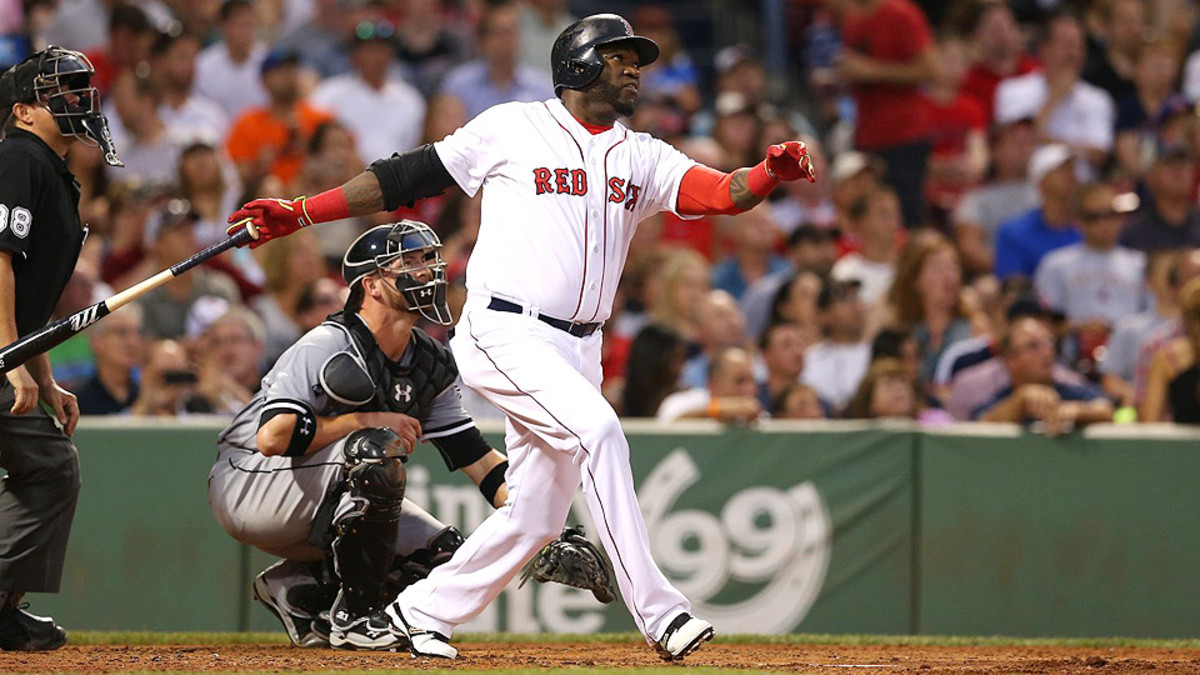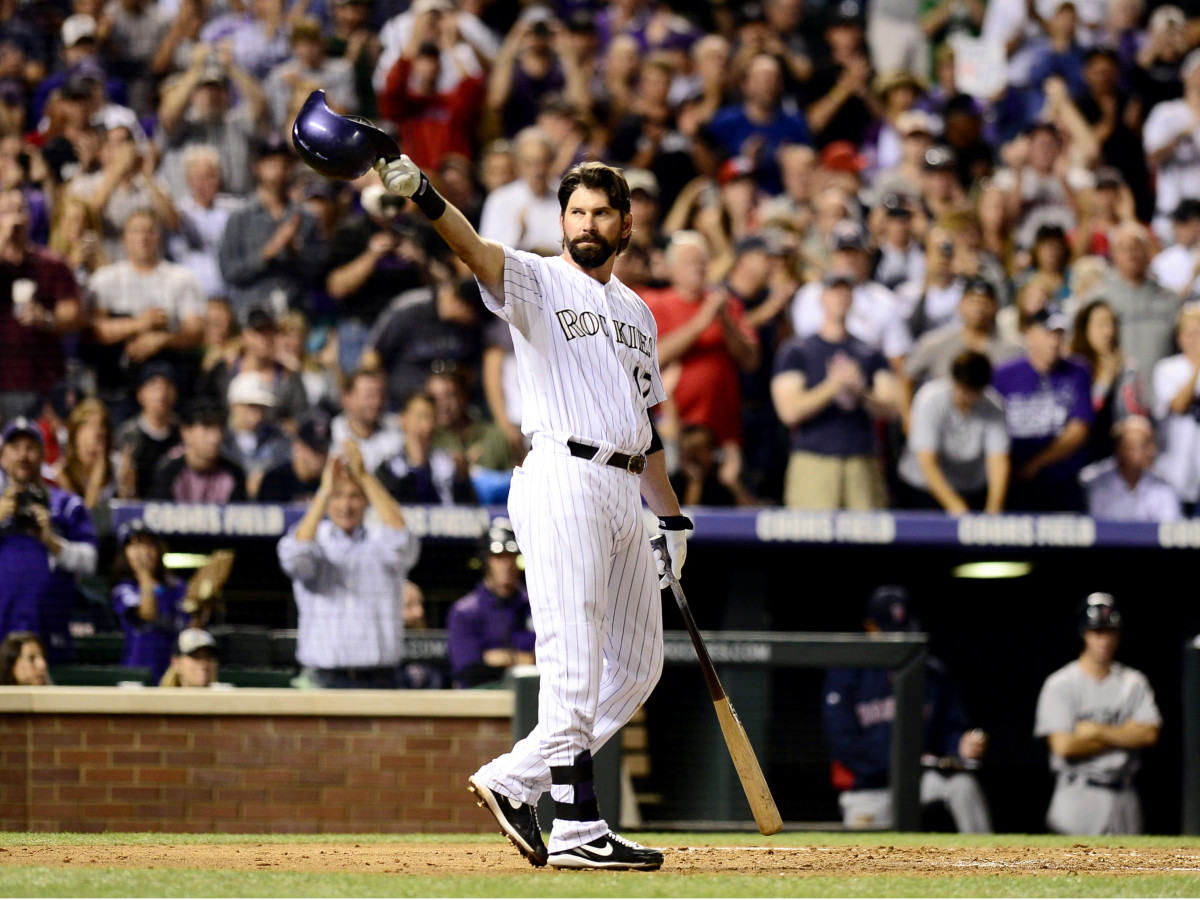The Baseball Hall of Fame Tracker Has Changed (and Improved) the Cooperstown Conversation

If any Hall of Fame season was set up to seem unusually long—and unusually loud—it’s this one.
In a lockout, MLB’s only source of winter news has been Cooperstown. It’s the last year for the hotly disputed candidacies of Barry Bonds and Roger Clemens, and it’s the first one for names like Alex Rodriguez and David Ortiz. Add those factors to a voting process that is already much scrutinized and increasingly sour—and, voilà, you have the experience of the last six weeks. The discourse started burning on Nov. 27, with the first publicly announced ballot of the winter, and new ones have been shared at an average rate of three per day to keep fueling the fire.

Which, sure, can get a bit tiresome. The same arguments crop up again and again. (Word is that if you say “character clause” three times into a mirror, your reflection turns into a tarnished plaque.) There are still two weeks left until the results will be announced on Jan. 25, and the discussion will surely loop back around on itself several times before then, just as it has done several times up until now. But even amid all that, it’s a small wonder these conversations have the space to happen in the first place.
Even just a decade ago, the scope of the discussion was considerably more limited, with public ballots harder to find and far less detail to look at. What changed? Mostly the enterprising work of the team behind the Baseball Hall of Fame Tracker. It’s transformed how the election information is shared—which has, in turn, transformed how baseball thinks and talks about the voting process.
Started in 2013 by a Bay Area–based fan named Ryan Thibodaux, the tracker collects every ballot that is released publicly (and a few more that are sent directly to the group to be shared anonymously) and maintains them in a spreadsheet, noting each candidate’s vote total, his change from the year before and other details. It’s a big part of what allows the current discussions to happen with such specificity and, by extension, with such vigor—not just to poke at individual ballots but to place them in context. The hot-stove chatter is no longer limited to Does he deserve the Hall? It now covers the technical, up-to-the-minute question of Is he getting the votes that he deserves?
In other words, the conversation has been changed by the act of record-keeping, and the change has happened fast. In 2014, about a third of voters shared their ballots before the results of the election were announced. In the last several years, that’s increased to half. It’s a significant enough jump for some to wonder if it’s perhaps too much—spoiling the process, rather than illuminating it. But that sidesteps the purpose of an exercise that’s meant to mark history, not to entertain, and anyways, who says the journey can’t be as interesting as the destination? (If anything, it makes the election seem a bit more like baseball season itself—daily ups and downs that dance over projected end-of-season winners, sometimes providing surprises, sometimes shaking out just as you’d expect.) And for Thibodaux? He’s never wanted to be a spoiler ready to share every last ballot before the results are declared. Instead, the 50% figure of the last few years feels like a sweet spot: Getting half of the ballots ahead of the announcement strikes him as just the right idea.
“I think that’s kind of a perfect number,” Thibodaux says. “It still leaves tons of stuff we don’t know the answer to while generating that interest and everything.”
As of Wednesday morning, 40.8% of ballots had been shared—about right on track to hit 50%, or a little bit over, by Jan. 25, Thibodaux says. That’s enough to know with relative certainty that Cooperstown isn’t in the cards right now for Todd Helton (57.5% of votes) or Andruw Jones (50.0%). But it creates lots of intrigue around a candidate like Ortiz—who currently sits well above the induction line of 75%, at 83.8% but with plenty of questions remaining. Given the more conservative tendencies of voters who tend to keep their ballots secret until the end, the fact that this is a first-time candidate who was a full-time DH with a link, however tenuous, to steroids … it’s quite possible we’ll see Ortiz slip below 75%. Or not! But it’s the sort of case whose chances never could have been analyzed in such detail even a few years ago.
“I think that for everything we do sort of spoil beforehand, we also generate interest and suspense in other ways,” Thibodaux says. “It’s a lot of conversation that might otherwise not happen except for one week in January. Now [it’s] for two months all winter.”

Is it ever. Rewind half a century, for instance, to 1972. It was the year that saw the election of Sandy Koufax, Yogi Berra and Early Wynn. But 13 players who would eventually make it to the Hall, including Ralph Kiner, Johnny Mize and Enos Slaughter, were also on the ballot and did not get enough votes. Seems like a situation with plenty to debate! There was a brief column saying as much in the pages of Sports Illustrated … on Jan. 31. It was the first and only analysis of the ballot that ran in the magazine that winter, and it came only after the announcement had already been made. Compare that with the now-standard batch of pre-announcement analysis from different angles this year at SI. (The more things change, however, the more they stay the same: “It makes you wonder sometimes how much the people casting the votes know about the sport,” was the (very) familiar complaint that ended the column in 1971.)
Sign up to get the Five-Tool Newsletter in your inbox every week during the MLB offseason.
But the ballots that are revealed before the results are only (literally) half the battle, as Thibodaux & Co. collect those that are revealed afterward, too. The change has been striking in recent years: The tracker has gone from getting 53% of total ballots in 2014 to 83% in 2021. (It helped that the BBWAA established an option for writers to automatically make their vote public upon the announcement of the results.) Which, of course, helps to set up the conversation for next year.
“I just hope that what we do drives interest more than it detracts from it,” Thibodaux says.
More MLB Coverage:
• Solidarity and Betrayal: Inside Baseball’s First Major Labor War
• Bonds, Clemens, Schilling and Sosa Have Two Cracks at Hall of Fame in 2022
• How Should We Evaluate Andruw Jones’s Hall of Fame Case?
• Where Is the Hall of Fame Love for Jeff Kent?
• Why Jimmy Rollins Belongs in the Hall of Fame
